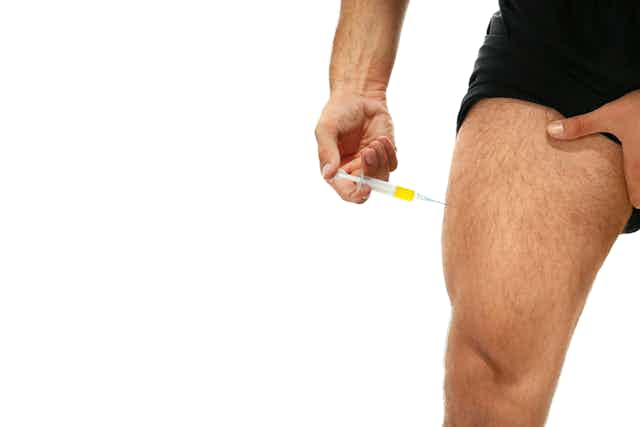Anti-doping is not just something that exists in elite sports; it’s increasingly being applied to recreational gym users. While most countries focus on prevention and education, a handful have taken the drastic step of introducing doping controls in commercial gyms. In 2003, Belgium became the first country to introduce such measures. Sweden, Denmark and Norway soon followed their lead.
Since the early 2000s, recreational trainers in Belgium – especially in Flanders – have been forbidden from using substances banned by the World Anti-Doping Code (WADC), which governs elite athletes. They also face the same sanctions as elite athletes. To vet people, anti-doping officials use muscle profiling. Although doping controls are meant to be random, it is often male weight trainers with a more muscular appearance who are tested for the use of steroids.
Police are able to conduct a home search based on a positive test, and an athlete may be subject to both a doping and a drug investigation for the same offence. These people face criminal prosecution for the use or possession of illegal substances and they also face sanctions from the Flemish national anti-doping organisation (NADO). If a person tests positive, and it’s a first offence, they may be banned by NADO Flanders for two years from every gym and any form of organised sport in the region. They may also receive a fine of, on average, €1,000-2,000, although fines can be as high as €25,000.
In Denmark any person training in a gym that has entered into a collaboration agreement with Anti-Doping Denmark (the country’s national anti-doping organisation) may be subject to doping controls. Gyms in Denmark must indicate at their entrance and on their website by means of a happy or frowning icon whether or not they are part of this agreement.
Sweden also has doping controls at training facilities and Norway’s anti-doping strategies have an element of monitoring and policing. For instance, fitness centres that adopt the anti-doping programme in Norway receive a licence to carry out tests on members suspected of doping. There is no legal obligation to sign up to be a “Clean Centre”, but gyms that do are perceived to have a reputational advantage. About half of Norway’s fitness centres now have a Clean Centre certificate.

Not a deterrent
The goal of these doping controls is to deter people from using substances that may be detrimental to their health. But, aside from privacy and human rights issues, such as undressing in front of a doping officer and targeting certain groups, recent research shows that doping tests in gyms may be ineffective anyway at preventing or reducing doping use. Rather, there are possible unintended negative outcomes that may increase health risks. For instance, users may train in basements and private clubs, stop training altogether, displace to other countries with no doping controls, or undertake more dangerous doping practices to avoid a positive test.
Drug testing in schools – including for doping – has proved ineffective in preventing students from trying drugs or doping substances. Not only do doping tests appear to have little deterrent effect, but it also is an extraordinarily expensive process.
While it is true that people are increasingly using steroids and other image enhancing drugs, testing in gyms does not seem to be the answer. If we have learned anything from the war on drugs, it is that repression does little to curb drug use. Instead, it contributes significantly to health and societal problems.
Criminalising recreational users and elite athletes not only leads to increased stigmatisation and marginalisation, but it maximises the risks associated with use (unsafe products) and hinders the implementation of harm-reduction initiatives.
As it becomes clear that doping use among the general public is a growing phenomenon, we must confront the issue head on. However, the use of performance enhancing drugs in society must be addressed not as a sporting issue nor as a criminal one, but rather as a matter of public health. We should focus attention on methods that have proved to be successful in addressing the use of performance and image enhancing drugs within the general population such as prevention and education, while seeking to reduce the harm associated with its use. One study of 15 to 21-year-olds found that combining anti-doping education with practical strength training can help prevent doping. Let’s go with the evidence and put an end to punitive measures.

